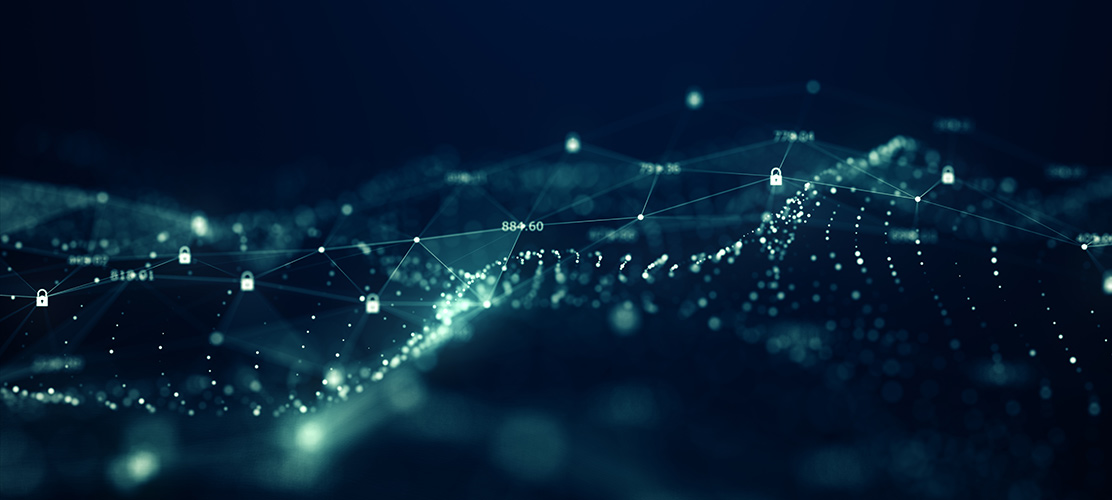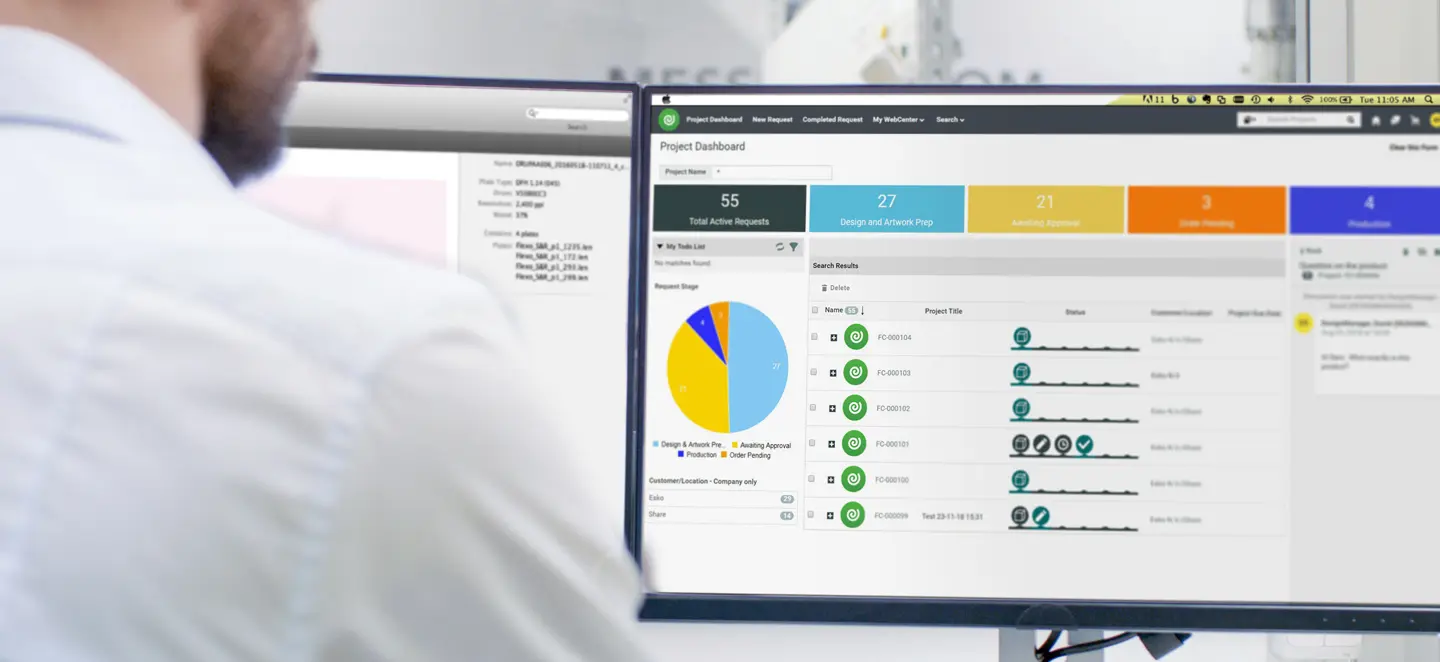The role of cybersecurity has become an executive-level focus point beyond the packaging industry’s wildest imagination. As technology continues to advance, packaging processes have become more sophisticated, integrating various IT systems and smart solutions to enhance efficiency and productivity. However, these technological advancements come with an increased threat landscape, making additional security measures essential to protect all data and ensuring the integrity and availability of packaging operations in line with the expectations of management, staff, and customers.
Customers expect that packaging professionals today are able to identify, understand, and address myriad cybersecurity risks, like cyber-attacks, data breaches, denial of service attacks, and ransomware threats.
This article will explore the current state of IT in the packaging industry, the cybersecurity challenges faced, world-class practices for ensuring proper security controls, the role of awareness and education, and thoughts for the future of digital information security.
Current State: IT Infrastructure in the Cloud
Today, more than ever, organizations are putting a portion of their IT infrastructure in the cloud with professional cloud service providers. Organizations also use more and more applications and IT services directly in a cloud subscription format instead of hosting these on-premise in their own IT environment. This is also true in the packaging industry.
The use of cloud-based solutions and services offers several significant advantages to organizations, but these advantages are not without their corresponding challenges. As Chris Janczar, Product Manager at Esko, states, “Embracing the cloud is not simply about shifting infrastructure; it’s about evolving your security mindset. It requires a commitment to continuous monitoring, adopting adaptive security protocols, and anticipating threats before they materialize. Organizations that succeed are those that treat cloud security as a dynamic process, ensuring both agility and protection.”
For example, cloud capabilities can be elastically provisioned and released to scale rapidly with actual demand. These provisioning capabilities appear to be unlimited and can be appropriated in any quantity at any time.
Cloud solutions and services are available over the internet and can be accessed by users via a browser.
Cloud resources are pooled to serve multiple customers using a multi-tenant model, with different physical and virtual resources dynamically assigned and reassigned according to customer demand. There is a sense of location independence.
Performance improvements are also achieved. Cloud-based solutions are capable of processing more data on demand, from anywhere, at any time, yielding enhanced operational agility.
Cloud solutions and services automatically control and optimize resource use by leveraging a metering capability appropriate to the type of service. Cloud resource usage can be monitored, controlled, and reported, providing transparency for both the provider and customer of the cloud solution and service.
Additionally, moving to the cloud helps future-proof the organization by allowing it to automatically keep pace with technological advancements and standards in the industry.
The centralized storage of packaging design and artwork information in the cloud provides a higher level of data protection. In the event of physical damage to on-premise hardware, cloud-stored data remains secure and accessible, allowing users to easily retrieve all information intact.
Minding Your Data
Data access control is paramount. For example, a ransomware attack on a packaging organization can halt production, leading to delays and increased costs. Additionally, the theft and publication of intellectual property and proprietary information can undermine an organization’s competitive advantage and global reputation.
Of those who responded to Esko’s Packaging Trends 2025 Survey, 33% indicated they are only somewhat satisfied with how their company manages data.
Therefore, it’s essential to determine who needs and has access to which data and how to manage that access effectively. Encryption plays a crucial role in securing data both in transit via the network and internet and at rest on the IT devices.
According to Paul Land, Senior Product Manager at Esko, “As we move more data to the cloud, companies run the risk of overlooking internal security measures. But maintaining robust internal testing and security practices is non-negotiable.”
Vendor reliability is critical. Choosing reputable vendors with strong security measures and evaluating service-level agreements (SLAs) for security and incident handling are essential steps in maintaining a secure supply chain in which your data is handled in a secure manner at any point in time.
Cybersecurity Challenges in the Cloud
As noted, the cloud is not a panacea. There is a significant concern among cloud users that hosting their data with a third-party presents more security risks. Oftentimes, third-party data hosting raises trust and reliability issues as well as compatibility issues with legacy systems. Some organizations struggle with the belief that they are losing control over their servers and their data.
Moreover, managing data control while adhering to relevant compliance standards requires a greater degree of human attention. Thus, a heightened focus on ensuring proper awareness, education, and training together with adapting to and verifying cloud-based security protocols is essential to maintain trust in the data handling.
Finally, balancing cost-effectiveness with security requirements can be an interesting exercise. “Security is often seen as the biggest inhibitor to a cloud-first journey, but in reality, it can be its greatest accelerator. These cloud platforms are designed with security at their core, offering features like security analytics and periodic updates to keep threats at bay and ensure compliance with various standards like ISO27001 and SOC2 Type II,” says Marc Vael, Platform Information Security Officer at Esko and a seasoned security expert with more than 20 years of security leadership experience.
Ensuring Greater Cybersecurity & Compliance: Risk Strategies and Practices
To mitigate relevant security risks down to an acceptable level, organizations must conduct comprehensive security risk assessments. This involves identifying risks, quantifying their impact, and prioritizing them based on their likelihood and potential consequences. Clearly, risks with the highest potential financial impact should be a top priority, as they pose the greatest threat to the organization.
Risk handling strategies include:
- Risk Avoidance: Changing processes or business practices or stopping certain products to remove the related risks.
- Risk Transfer: Using insurance, contractual agreements or external third parties to transfer some risks from the organization to other ones.
- Risk Reduction: Implementing specific projects to reduce the likelihood or the impact of identified risks down to an acceptable level.
- Risk Acceptance: Executive management can formally accept the residual risk, but this risk will be subject to an annual review to challenge if it is still normal to accept the risk as it is.
Today’s cloud-based platforms offer strong security features such as advanced encryption, stringent access controls, and ongoing security intelligence monitoring. They also provide disaster recovery capabilities, ensuring that packaging data is protected against unauthorized changes or deletion and can be restored quickly. This plays a critical role in any business continuity planning, allowing organizations to maintain core operations with minimal downtime. By implementing these strategies, packaging organizations minimize security risks and maintain the integrity and availability of relevant data.
Ensuring legal and regulatory compliance is another critical aspect of risk management. Packaging organizations must stay informed of ever-changing data security laws and their requirements. Regular security compliance audits and assessments performed by independent third parties help provide guarantees to customers that the cloud-based platforms do meet all facets of compliance laws and regulations. This will avoid unnecessary fines and penalties, as well as avoid unplanned corrective actions to implement processes and tools to bridge the compliance gaps identified.
The Role of Awareness, Education, and Training in Cybersecurity
Awareness, education, and training are fundamental components in any cybersecurity strategy. Security failures are often blamed on the human component, such as “people are the weakest link in security.” However, according to Marc Vael, “People are our best defense against security issues and breaches. It is essential to create and maintain a proper solid culture of vigilance, awareness, and common-sense responses within the organization to ensure literally everyone is on the same page.”
Addressing emerging cybersecurity threats and vulnerabilities requires a comprehensive approach. Security awareness is the first step. Providing short, simple and easy to understand messages in different formats (videos, presentations, documents, posters, etc.) is key to keeping security top-of-mind for all employees.
Aside from these security awareness messages, more detailed security education must be made available as needed for general and department-specific educational purposes. For instance, it makes sense to provide HR specific security education such as onboarding presentations, but also for educating HR employees about possible threats such as fake requests from cybercriminals to change bank accounts of employees. Also, finance employees may require additional education related to specific financial security threats, urgent payment handling, changes in bank account information, and more.
Creating a security-conscious culture encourages vigilance and a proactive approach to security. Consider security training consisting of simulations and exercises including potential phishing and social engineering attacks. This enables employees to get a real feel for what these threats or attacks look like and how they should respond to them. Regular security training summarizes security awareness and education, but also provides tips to become resilient against cybercriminals.
In conclusion
Cybersecurity has become one of the critical components of the modern packaging industry. As organizations continue to embrace digital transformation, it is essential to implement proper cybersecurity measures to protect sensitive data against unauthorized disclosure and ensure the integrity and availability of packaging operations. By understanding the current state of IT in the industry, addressing cybersecurity challenges, implementing world-class practices, and staying compliant with laws and regulations, packaging organizations can safeguard their operations, maintain a competitive edge, and continue to innovate without distractions of security incidents.
Moreover, ongoing awareness, education, and training for all employees is essential to enhance the understanding of cybersecurity. As Marc Vael states, “Every technological novelty can be used and abused. Staying ahead of the curve requires continuous monitoring, regular review of security protocols, and proper secure collaboration with external partners and vendors.” By maintaining a proactive approach to cybersecurity, organizations can ensure they are well-prepared to handle future challenges and protect their valuable assets.






